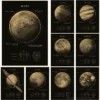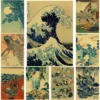Los Angeles’ Iconic Palm Trees – A Tropical Illusion in the Desert
Swaying gently over the boulevards, palm trees evoke Los Angeles glamour everywhere from Beverly Hills to Venice Beach. Their slender trunks and breezy fronds appear as quintessentially Californian as surfboards and starlets. Yet the palms gracing LA with tropical flair are actually imposters. Not a single one of the city’s 75,000 iconic palms is native to the region. Their roots reveal an illusion crafted by clever marketing and imported beauty.
Desert Scrubland Turned Oasis
Los Angeles’ palm-studded streets belie its natural arid climate. The LA basin was once sparse desert scrubland dotted with oaks and sycamores. Springs and creeks carved a rare lush oasis that drew early Spanish settlers in the 18th century.
But the landscape proved challenging for a growing town. By the late 1800s, Los Angeles boosters sought to attract new residents and businesses. They envisioned grand boulevards evoking the romantic exoticism of Europe or the Mediterranean. And thus the palm tree mania was born.
Paradise Imported
In the 1880s, real estate developers began blanketing Los Angeles with palms imported from Mexico, Asia and the Middle East. Toweling off after Mediterranean holidays, they saw lucrative potential in tropical palms to brand the city as a luxurious paradise. Soon thousands of palms were uprooted and shipped West to fulfill the vision.
The very idea of palm trees in Los Angeles was ripped from the French Riviera playbook. Just decades prior, Nice had transformed its coastline by importing palm trees to cultivate prestige. LA developers copied this to market an enticing new lifestyle in America’s fledgling Western metropolis.
Though not native, palms offered ideal branding. Their exotic aesthetic conveyed carefree luxury in a bustling yet idyllic haven. And they transported easily once established, allowing a lush makeover seemingly overnight. LA was primed to bloom from barren desert outpost into a palm-studded paradise.
Building the Dream
By the early 1900s, palms became indelibly linked with LA’s identity. Civic improvement pushed the makeover, with financial titans like the Huntingtons donating palms to new neighborhoods. Boosters even handed out young palms to property owners willing to help realize their vision.
Soon palms adorned hospitals, schools, civic centers, hotels, and neighborhoods across the city. They attracted floods of admirers to California’s alluring new urban oasis. Even East Coast filmmakers migrated West, where convenient palm backlots added glamorous backdrops.
Soon LA’s manufactured tropical image flourished everywhere from Hollywood films to postcards to travelogues. The imported illusion was complete. Native oak and sycamores receded into the background as exotic palms took center stage.
An Enduring Illusion
Today, Los Angeles’ wavy palms continue casting an alluring spell over residents and visitors. Their presence transports imaginations to languid tropical shores free of urban cares.
But behind the breezy fronds arecalculated roots. Palm trees symbolize the city’s genius for imagination, illusion, and self-invention. Beneath each trunk lies a story of aspiration, immigration and imported identity.
Just like the ambitious stars, visionaries and entrepreneurs who migrated here chasing dreams. There are no natives in the City of Angels. Only people drawn by the light of a brilliant mirage – the swaying promise of paradise.



